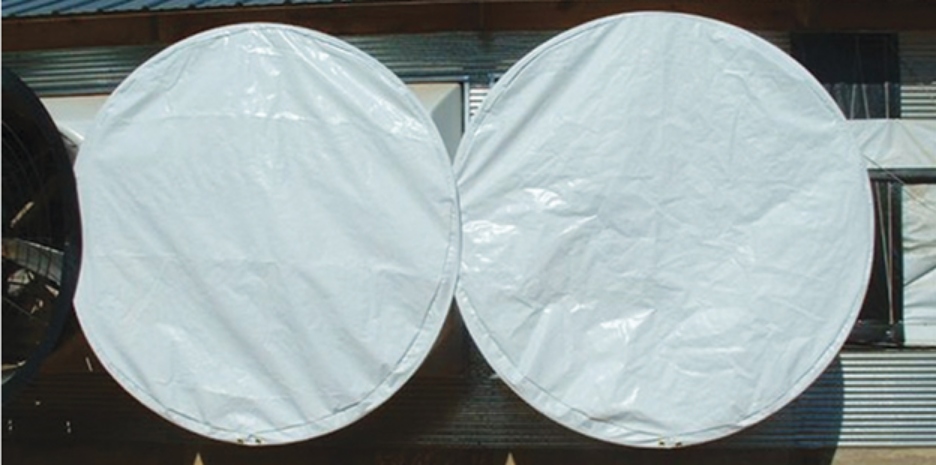As temperatures begin to fall, small problems in barns—drafts, weak heaters, worn curtains—quickly become key issues. Winter prep does not have to be complicated or expensive. The goal is simple: keep air moving the way it should, hold heat where it belongs, and reduce emergency repairs. Below is a practical checklist to help you get your barns ready for wintry weather.
Seal Up Air Leaks — but Keep Control of the Airflow
Walk to the inside perimeter of the barn and look for daylight where it should not be. A tight building lets you control where the air enters — through the inlets, not through cracks.
- Inspect sidewall curtains for tears, frayed cables, or loose pulleys. Replace only the sections or parts that are worn — most components are available individually through Hog Slat.
- Check fan housings and inlet frames for gaps where cold air can bypass the system. Foam seals or weather stripping may need tightening or replacement.
Minimum Ventilation Matters More in Winter
Even in cold weather, barns still need fresh air to remove moisture and ammonia.
- Make sure inlets open evenly and direct air along the ceiling, not straight onto animals.
- Keep shutters and guards on fans clean — dust build-up reduces airflow and increases power use.
- Run low-speed fans consistently instead of large on/off swings, which cause temperature drops and wet floors.
GrowerSELECT® replacement inlets and fan parts are commonly used during this time of year to keep systems operating smoothly.
Service Heaters Before the First Cold Snap
A heater failure in January usually traces back to skipped maintenance in November.
- Clean dust and cobwebs from heaters, brooders, and ignition assemblies.
- Check thermocouples, spark igniters, hoses, and regulators for wear.
- Test heaters on a cold morning while the barn is empty or lightly stocked and verify uniform temperature across the room.
Keep Feed Moving
Cold weather puts extra strain on feed systems. A frozen auger or burnt-out motor can shut everything down.
- Listen for grinding or hesitation in drive units.
- Inspect chains, sprockets, and corner gearboxes for wear.
- Check feed bin lids and boots to keep moisture out and prevent bridging.
GrowerSELECT® motors, bearings, chains, and gearbox components are direct replacements for many existing systems.
Back-Up Power and Alarms
Winter storms and power outages usually happen at the worst possible time.
- Test alarm systems to confirm alerts go to the correct phone numbers.
- Start backup generators under load and make sure fuel is fresh.
- Post a simple “what to do” sheet near the control panel with emergency contacts and procedures.
Final Tip: Stock the Small Parts Now
Keeping a few key parts on hand can turn a crisis into a quick fix:
- Fan belts, bearings, and motor capacitors
- Heater igniters and flame sensors
- Curtain repair hardware and inlet cables
- Electrical connectors, fuses, and shrink tubing
Looking Ahead
Winter doesn’t have to be complicated. A few hours of preparation now can prevent animal stress, equipment failures, and unexpected costs later.
2026 Hog Slat | Georgia Poultry Catalog – Available January 1, 2026
Request a catalog or sign up for our enewsletter at: hogslat.com/information-catalog-email-contact-request












 Україна
Україна Méjico
Méjico



